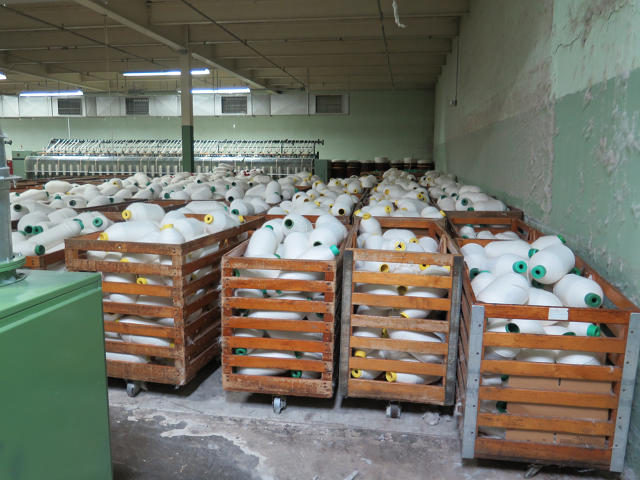Zady is attempting to show that it is that you can think of to fabricate clothing which is good for staff and the environment—and at an affordable cost.
June 15, 2015
How do you are making a T-shirt that does no harm?
it can be no longer a simple challenge. rising cotton makes use of extra pesticides than every other crop on the earth, and processing the material generally entails dumping polluted wastewater into rivers. Garment factories are infamous for the type of negligence that ended in the 2013 building crumple in Bangladesh and the loss of life of over 1,000 individuals—all working on the most recent fast fashion, prone to quickly crumble and prove in a landfill.
A startup known as Zady is attempting to rethink the entire device and show that it is imaginable to do issues otherwise.
“the bottom line of all of it is that it’s in reality onerous to un-be aware of things when you discover them,” says Maxine Bedat, who co-founded Zady with Soraya Darabi. “That was more or less why we now have ventured down this crazy but incredibly exciting direction.”

each step of the production course of occurs within the U.S., so the corporate can higher observe what’s taking place—and depend on stricter U.S. laws. Zady’s new T-shirt is made from cotton grown organically in Texas on farms that use compost as fertilizer and pure dips in temperature to kill bugs and defoliate the crops. The bales are despatched to small towns in North Carolina—part of the final vestiges of the former American attire industry—for spinning, knitting, and non-toxic dyeing. A worker-owned manufacturing facility sews the shirt.
“it can be working totally backwards from how the trade developed during the last 20 years,” says Bedat. “but as a result of going through the reverse process—beginning with the farm and working our way forward—we in truth were able to make no longer just a extra sustainable product, but a better quality product.”
by working domestically, the brand can stay in higher verbal exchange with the factories, and higher screen quality and design considerations. they are additionally robotically forced into long relationships with suppliers, because so few American apparel producers are left.
“part of the problem in the type business is that the trend brands will be with one manufacturing facility one season, the following season they may be with the subsequent—it can be simply roughly the lowest cost supplier,” she says. “And we’re finding that we are able to improve a a lot better product through building these relationships over the long term.”

they are able to also simply see how workers are being handled, and avoid a common downside within the business: A factory in a place like Bangladesh may outsource orders to any other factory with human rights issues. “So you may have this great relationship with the manufacturing unit, and a model may go and take a picture of that factory, but little did you know that the manufacturing facility is outsourcing somewhere else that doesn’t seem as pretty or have the same requirements,” Bedat says.

The fledgling brand has additionally designed a socially responsible sweater from scratch, the usage of wool from a ranch in Oregon with a carbon management plan. while most industrial sheep ranching—in places like chinese language and Australian deserts—depends on scarce water provides to irrigate land for grazing, the ranch in Oregon uses rainwater. The wool is cleaned and dyed with out the everyday polluting procedures (a typical wool cleansing plant may create as a lot daily waste because the sewage from a town of fifty,000).
All of these small print imply further manufacturing prices. still, the final product is not outrageously expensive—the T-shirt is $36, more than you’ll pay at gap, but not up to chances are you’ll spend at some boutiques. And the company is making a bet that people pays for the standard and the story.

“it is a challenge when we’re competing in opposition to people who are paying non-residing wages, and we’re paying dwelling wages,” says Bedat. “but it surely’s about getting a better quality product. And at the finish of the day, people—particularly in our technology—now we have enough garb. So after we’re buying one thing, we’re buying it for a purpose.”
they’re providing a range of garb from different small, sustainable producers, together with their very own brand. They hope to focus on folks beyond folks that would possibly already shop at whole meals and be smartly-versed on the challenges of the attire provide chain.

“We’re now not simply having a look at these people who find themselves roughly the do-gooders,” she says. “i’ve to admit I wasn’t one. I very conveniently offered quick model brands and incorporated that without any knowledge.”
the corporate’s mission, as a lot as promoting clothes, is helping open eyes to the issues. “There are parallels with the tobacco business,” says Bedat. “All of that knowledge was hidden from us, however then once that information got here out about what it does to our our bodies, the development more or less modified. the same can happen with apparel. We see we’re at the beginning tiers of that entire movement. there was an industry that has hidden this knowledge.”
[All Photos: via Zady]
(131)